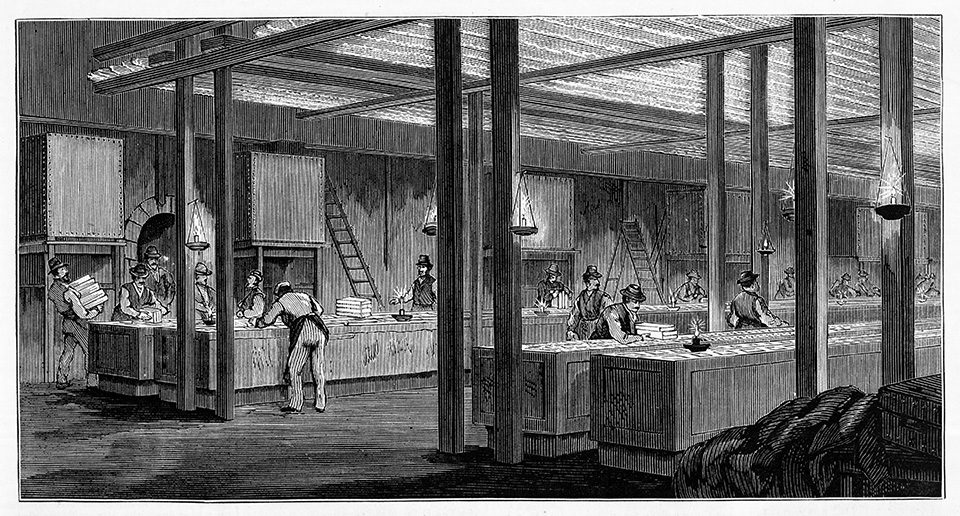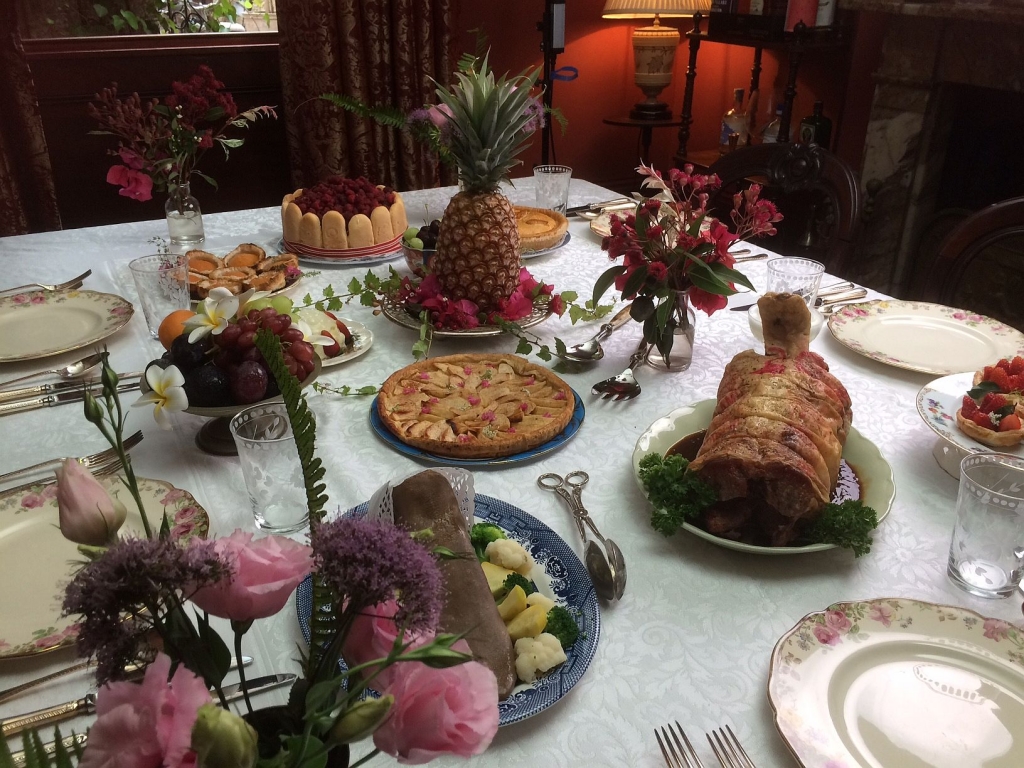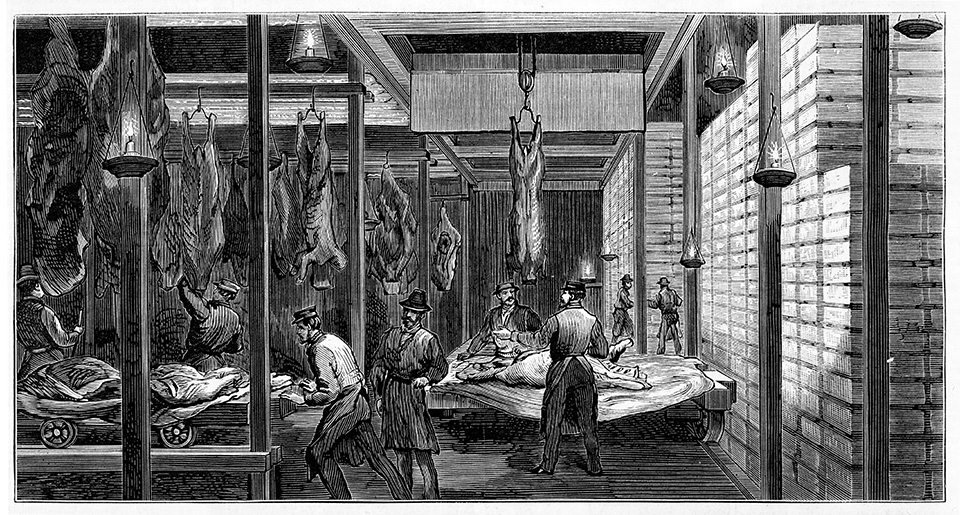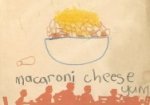Frozen food is not something we might normally associate with picnics, but in 1875 entrepreneur businessman Thomas Sutcliffe Mort invited three hundred dignitaries to a picnic in Bowenfels, New South Wales, in the Lithgow Valley to demonstrate the colony’s latest technology.
The picnic spread was extensive, featuring thirty dishes comprising four courses – meat, pastries, salads, sweets, ices.
Round of Beef; Roast Sirloin; Saddle of Mutton; Leg and Loin of Mutton; Roast Turkey; Roast Fowl; Ham; Tongue
Beefsteak Pie; Pigeon Pie; Raised Pork Pie; Chicken Pie; Wonga Pie
Aspic Jelly; Mayonnaise; Lobster in Jelly; Lobster Salad
Apple Tart; Raspberry Jam Tart; Tartlets; Custards; Charlotte Russe; Quince Tart; Cheese Cakes; Blancmange; Jelly; Trifles
ICES – Apricot Cream; Vanille; Raspberry Cream; Ice Pudding
Printed at the bottom of the menu card is a note saying that
‘the whole of the above, inclusive of the Pastry and Sweets, have been preserved by the FREEZING PROCESS for some time past’
and that the native wonga pigeons for the pie had been shot some eighteen months prior to the picnic, in March 1874.

MESSRS. MORT AND CO’S MEAT PRESERVING WORKS, DARLING HARBOR, SYDNEY. State Library of Victoria IAN12/06/76/88a
Media launch, 1875 style
A case of ‘the proof of the pudding is in the eating’, the picnic was what we would now call a ‘media launch’ to celebrate the opening of the New South Wales Fresh Food and Ice Company’s new freezing works at Darling Harbour. In true spirit of colonial adventure, the guests boarded a steam train at Darling Harbour and traveled the goods line out of Sydney, arriving in Lithgow in time for lunch. The proceedings were published in the Sydney Morning Herald and is an extraordinary story of colonial innovation and entrepreneurship, which you can read more about in detail here.

A selection of dishes inspired by the 1875 menu. Photo © Jacqui Newling for Sydney Living Museums
[Re]creating an 1870s banquet
We were asked by a local production company if we could recreate elements of the picnic banquet menu for a film shoot about Thomas Mort and his colleagues’ contribution to the frozen food industry. Enlisting the help of colonial food specialist, Charmaine O’Brien, author of The Colonial Kitchen to make the sweet dishes and style the table in the befitting manner, we produced a sumptuous Victorian style luncheon table of sweet and savoury dishes. I undertook to supply the ubiquitous tongue, a chicken pie, a saddle of lamb (mutton proved too difficult to source in the given time frame) while Charmaine made an apple tart, apricot tartlets, strawberry, an ice pudding (several actually, as they kept melting under the filming lights), a blancmange and the pièce de résistance, a raspberry topped Charlotte Russe.

Charlotte Russe prepared by Charmaine O’Brien. Photo © Jacqui Newling for Sydney Living Museums
Saddle up!
I’ve been faced with the challenge of boiling tongues on several occasions, but this was my first opportunity to cook a saddle of lamb. The saddle is a cut no longer common in modern butchery. In simplest terms it is the section of the animal that loin chops are cut from. Colour plates from 19th century cookbooks give a good idea of what the saddle should look like, with a distinguishing upturned ‘tail’ at its end, which is actually, I came to discover, is the lamb’s tail.

Roast saddle of lamb. Photo © Jacqui Newling
Frozen moments
Perhaps responding to Australia’s climatic conditions, colonial entrepreneurs and innovators were at the cutting edge of refrigeration and freezing technologies in the mid-late 1800s.
Australia was home to several key players in the frozen food game. James Harrison, a Scottish immigrant based in Geelong made a significant breakthrough in the manufacture of ice in the 1850s, but other entrepreneurs had greater ambitions. Thomas Mort and Augustus Morris – entrepreneurial businessmen who had extensive commercial interests in sheep, cattle and dairying in New South Wales – teamed up with French-trained engineer Eugene Nicolle to find ways to freeze meat for export. They developed the world’s first food freezing works, in the Sydney harbourside suburb of Darlinghurst, proving in 1867 that meat could be frozen by Morris’s ‘Patent Meat Preserving Apparatus’ ‘neither loses flavour nor becomes putrescent immediately upon thawing’ (Sydney Morning Herald September 18, 1867).

MESSRS. MORT AND CO’S MEAT PRESERVING WORKS, DARLING HARBOR, SYDNEY. Illustrated Australian News 12 June 1876, p. 88. Published by Ebenezer and David Syme, Melbourne. State Library of Victoria IAN12/06/76/88a.
They were pipped at the post, so to speak, by South American competitors who successfully sent a shipment of frozen meat to Europe, but the business forged ahead, and opened new markets for Australian meat producers. Buoyed by their small-scale successes the New South Wales Fresh food and Ice Company set up shop in larger ‘state-of-the-art’ premises in Darling Harbour.
Further reading:
For more detailed information about the work of Eugene Dominic Nicholle and colonial pioneers in the industry see Michael Organ & Fred Turnidge ‘E.D. Nicolle – Australian Pioneer of Refrigeration’


